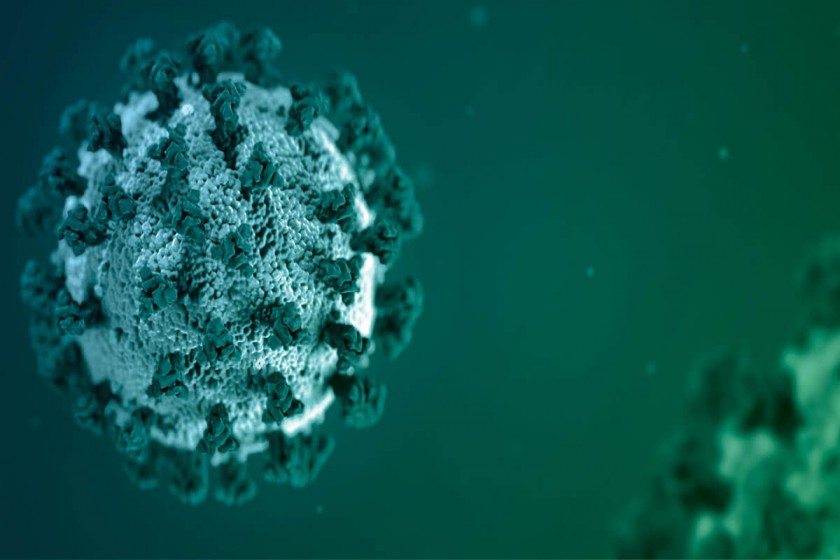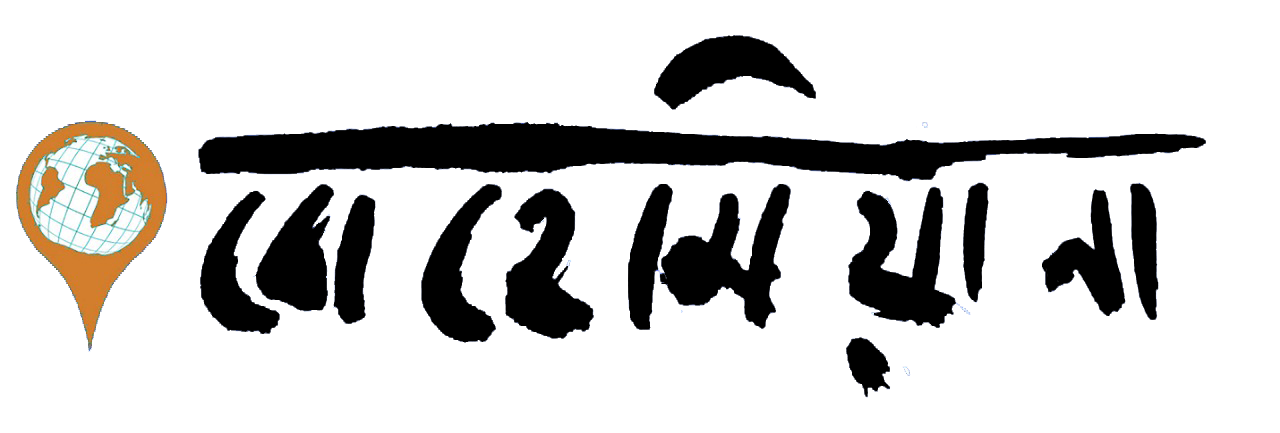The Covid-19 pandemic is increasing at an alarming rate in India. The total number of infections has risen to more than 350,000. To reach 100,000 it took 109 days, the second 100,000 was achieved in fifteen days and the 300,000 mark was hit in only ten days. The figure for Maharashtra alone has crossed 100,000 mark.1 The situation in Delhi, Tamilnadu and Gujarat are also frightening enough. The rate at which the infection is spreading in India, it seems that it is only a matter of time before we catch up with countries heading the list like the USA and Brazil. The infection is also increasing on a global scale. Though in some countries the infection rate is decreasing, however experts are of opinion that second and third waves of infection will follow the first.2 The Spanish Flu of 1918-19 also witnessed three consecutive waves of infection, recording a death toll of five crore people. Before we see any possibility of the first wave of virus receding, it has already recorded a death toll of 450,000 people. The virus has also made inroads into the poor and underdeveloped countries of the world. These are especially regions where population and its density are both high enough. It becomes a nightmare to fathom a scenario when the virus will have its full bloom in these underdeveloped parts of the world.
The grave concern is that these poor and underdeveloped countries hardly have any sound health care structure or have geared themselves up to combat the deep crises caused by the pandemic. Even the ‘developed’ capitalist world, who have made great progress in science & technology, who are flexing muscles with their highly sophisticated war armaments, who are engaged in sending rockets and space crafts to set up new colonies in Moon and Mars have been rendered helpless in front of the new virus. In pursuit of intense profit and its accumulation these ‘developed’ countries have relegated the measures to be adopted in fighting the various viruses-bacteria-parasites. No less than thirty scientists have prepared a list of most lethal viruses as a warning, way back in the month of February 2018. In reference to this Peter Daszak, the head of a science research institute told The New York Times, “The problem isn’t that prevention was impossible. It was very possible. But we didn’t do it. Governments thought it was too expensive. Pharmaceutical companies operate for profit”.3 The capitalist society driven by the sole objective of profit maximisation, is characterised by colossal neglect of the public healthcare system and a lack of preparation to adopt durable measures to fight the pandemic, reducing the human lives to little or of no value.
The guidelines issued by WHO and many national and international health organisations to fight the pandemic are questionable enough in view of their implementation across all sections of society. The set of norms and regulations issued by experts-ministers-bureaucrats include: The use of face mask while going outdoors, to wash one’s palms at least ten times a day for twenty seconds with soap water, to use sanitiser, to remain neat & clean, to keep a distance of a metre between individuals, to remain indoors as per lockdown rules, to work from home, to quarantine oneself at the first sign of infection at their own residence and so on and so forth. The top 15 to 20 per cent of the wealthy middle and upper class people of India, who are ‘educated’ and ‘conscious’ enough have almost accepted the norms and have been able to adopt themselves to the ‘new normal’ situation. In fact, many have become accustomed to carry on their work from home. But it goes without saying that for overwhelming majority of the working class people these norms are absolutely impossible and impractical to follow. The deep abyss into which the migrant workers sank as a result of implementation of these regulations by the government have already been discussed in the first part of this essay. The blatant reality is, the set of rules implemented by the government was not only impractical for millions of abysmally poor working mass in India and other underdeveloped parts of the world but it also brought misery beyond any measure.
In 2019 a World Water Development report published by UN notes with concern that 3 out of 10 people (2.1 billion people) do not have access to potable water. Out of them 1.9 billion people reside in rural areas and half of them belong to Sub-Saharan Africa. Apart from this, a whooping 2.9 billion people (37.1% of world population) are denied of basic sanitation facilities; still today as many as 0.89 billion people are compelled to defecate in open fields.4 A report published by WHO in 2019 brings to light that almost 3 billion people (38.46% of world population) are deprived of the ‘luxury’ of washing their hands and face with soap water. As a consequence, every year 297,000 children of less than five years of age succumb to diarrhoea, Cholera, Hepatitis A, Typhoid etc.5 1 out of 3 people have no access to potable water, sanitation & hygiene, in a word ‘WASH’ system eludes them perpetually. As a result, the probability of death from vector borne deceases is 300 times more in underdeveloped world than in developed countries!6
Leaving aside the story of underdeveloped world if we focus our attention specifically to India we will find it is in no way better either. 50.7 per cent of people in rural India and 20.2 per cent people in urban India have no access to wash themselves with soap water. Taken together the figure is 40.5 per cent.7 That means 520 million people of India are left away from the very second guideline issued to fight the coronavirus. A 2019 report of Niti Aayog brings to light that still today as many as 800 million people suffer from acute scarcity of water and 70 per cent of the population are forced to use contaminated water. Most of them are in want of piped water supply.8 Though it is true that since the launch of ‘Swach Bharat Mission’ the rate of open defecation has gone down but as late as 2018 almost 44 per cent of the population residing in Uttar Pradesh, Bihar, Madhya Pradesh and Rajasthan are compelled or habituated to open defecation.9 The dismal facts and figures makes it clear enough that a huge section of Indian populace are well outside the arena of proper health and hygiene infrastructure. It is needless to say most of them are rural impoverished working mass.
The condition of poor working class urban people are also in dire state. A study reveals that 115 million urban people are slum dwellers.10 How are they negotiating the lockdown? Let us pick up the case of Mumbai metropolis whose 42 per cent people are slum dwellers and 57 per cent of them are housed in one room dwelling. In Dharavi slum of Mumbai, a startling 8.5 million poor working people are cramped in only 2.4 sq km area, i.e. 3.54 lac people per sq km area. In one-sixth portion of a typical one room flat with a kitchen, 6 to 7 people are compelled to pack themselves. A 10 feet by 10 feet room even houses 12 heads. A community toilet is accessed by as numerous as 250 people. 70 per cent of Covid-19 infected people are concentrated in ten big cities among whom Mumbai tops the list.11 On 27th April, when the Covid-19 infection was rising sharply and the government was running short of quarantine centres, a caprice notice was issued – from now on people will have to stay in home isolation. For millions of slum dwellers of the country including Dharavi this was ridiculous indeed. The fact is 870 million people in the country have no separate room for them and are trammelled in one or two roomed houses. The scenario for West Bengal is no better.12 It is no surprise that in such ghettos/slums/shanties the infection will spread at an exponential rate and will lead to a community transmission. The new terminologies – ‘Social Distancing’, ‘Physical Distancing’, ‘Isolating in a single room’, ‘Use of separate toilet’ are no less than fantasies to them. The abject poverty of the overwhelming people of India stands in the way of enjoying – proper concrete house, toilet, clean, piped and potable water, adequate food and healthcare access. Thus the pandemic due to Corona is not independent of class or a person’s position in the social rung. Like every other social phenomenon this pandemic also has got its own class character. The chances of getting infected are disproportionately high for the working class people. However, the irony is – this virus has been brought to the country by the capitalist and wealthy classes.
The primary condition to implement an effective Public Health Care system or ensuring Health Security of the people hinges on: a permanent job, two square wholesome meals a day, sufficient clean water, a stable and/or concrete house (which will not collapse by storms like Aayala/Amphun), a fully covered and proper sanitation system with toilet, adequate clothing catering to seasonal variations, access to universal public health care system, a free & compulsory public education system for the children, making literate the already grown up people, eradicating all sorts of superstition & metaphysical believes, development of the cultural life of people etc, the list is pretty long & includes all the above but not limited by these. But it is clear to all, that these facilities are easily available to the class of capitalists - big landlords - wealthy businessmen & professionals. By virtue of their wealth, power & hegemony they can acquire & appropriate all these socially available facilities. Hence in a sharply class divided society the availability & access to public health care system naturally acquires a class character. It loses its universal nature. As long as the working class including all downtrodden people (which includes adivasis, dalits, mahadalits, obcs, minorities & backward nations) are subject to exploitation & oppression of the above mentioned classes, true public health care system along with several other social problems will be unable to provide a stable & efficient solution to them. They are the most vulnerable section who gets easily infected & succumb to it even more easily.
The universal public health care system in India is a far cry. In other words, since independence no governments have paid any serious attention to it. The budget allocation for healthcare system in India in 2020 is a meagre 1.6 per cent of GDP, including both the union & state governments’ expenditure. From 2008 onwards this percentage has remained unchanged. The budget includes salaries to health workers, maintenance of several health organisations & hospitals, it even accounts for the premium expenditure for ‘Ayushman Bharat’. In absolute terms the gross expenditure is only 70 thousand crore rupees from the part of the central government. WHO recommends 3.5-4.0 per cent of GDP as healthcare expenditure. The government of India is no where near to it.13 Let alone the developed countries, if we look at the BRICS countries, Brazil spends 8.3, Russia spends 7.1, South Africa 8.8 (all as a per cent of GDP) in public healthcare system. Even among the SAARC countries India is not better placed either. The figures are – Afghanistan spends 8.2, Maldives spends 13.7, Nepal spends 5.8 (all as a per cent of GDP).14 However, if we consider the private healthcare investment, the figure for India becomes little more than 3 per cent of GDP.
The per capita expenditure in health sector in India is a paltry sum of Rs 1259. Therefore, in a month it is only Rs 105, in a day a paltry sum of Rs 3.50 – which can hardly purchase a pack of ten paracetamol tablets.15 This single data divulges the harsh reality beyond any doubt that the bulk expenditure towards healthcare comes from individual’s pocket (or they perish due to nonavailability of resources). The poor peoples of India are forced to cough up 58.7 per cent of the total healthcare expenditure out of their pockets in 2017 (which does not include the travel and other expenses).16 Left with no other alternative they often resort to spend their meagre savings or borrow from moneylenders; selling however little assets they have, including land or have to spend a bulk of their meagre income for accessing healthcare facilities. The significant and more tragic part of the story is compounded by the fact that the majority of these poor working class people have to turn to private hospitals and nursing homes in absence of proper healthcare facilities in the public hospitals/health centres/municipal clinics. As high as 61 per cent urban & 52 per cent rural populace were forced to purchase healthcare facilities from private hospitals and nursing homes. Taken together 42 per cent of the total population depends on government health care system.17 It has been observed that for each type of different deceases the public healthcare system has to incur on an average Rs 4,452, the corresponding figure for private healthcare system is Rs 31,854 – a figure more than 7.2 times of their public counterpart. Therefore, progressive neglect and undermining of the public healthcare system coupled with providing impetus to private capital in healthcare has resulted on increasing dependence on the private healthcare sector. An estimate suggests that each year about 6.2 per cent people drop below poverty line as a result of their expenditure towards maintaining their own individual healthare.18
The abysmally low public spending in healthcare system reflect in the number of beds, doctors, nurses, other health workers, ICU beds and ventilators per patient in the country. The primary health centres, where the poor people have to find their initial treatment are also in a battered state. Six out of ten such centres run with only a single doctor.19 According to WHO, a country must have one doctor for thousand persons. However, in India we have one doctor for 10,189 persons; the total shortfall in the number of doctors is 600,000; for nurses the figure is 200,000.20 We should keep in mind that these figures are both for public and private sectors conjointly. A survey conducted recently by the Union Government brings out the vulnerable and palpable state of public healthcare system to fight the Covid-19 pandemic. In the district of Panna in Madhya Pradesh we have only one ventilator and there is no private hospital to make up this deficiency. The nearest Covid-19 testing lab for Dirang valley in Arunachal Pradesh is located in Dibrugarh, a long 379 km away. There is no provision of ventilators in the district hospitals of Dima Hasao, Nalbari, Udalgudi – all in the state of Assam.21 Apart from Varanasi and Gorakhpur, only one Covid-19 testing lab caters to the humongous population of 17 districts in eastern UP.22 According to one estimate, four out of five doctors, two-thirds of the hospital beds and 80 per cent of the ventilators are converged in the hands of corporate hospitals and nursing homes. The irony is, till today only 10 per cent of the Covid-19 affected people have been treated there and obviously at an extravagant sum.23 As a matter of fact, even the huge metropolis like Delhi and Mumbai are reeling due to acute scarcity of beds, doctors and nurses. Even the shortages of masks, sanitisers, PPEs in several states are prominent enough. Right at the onset of the pandemic, WHO has stressed on conducting tests and more tests. But almost all the states are lagging behind the requisite number of tests to be performed. More number of tests would have detected more numbers of infected people and would have helped in assessing the outbreak in a better way helping the government to gear up the healthcare system to address the pandemic in a better way.24 It is also fount that some of the states have witnessed an increase in infection rate despite a reduced number of tests.25 Given such a pathetic public healthcare system it is hard enough to contemplate the scale of catastrophe with the astronomical surge in the rate of infections in the coming days.
The battered state of public health care system as witnessed today was definitely not in such a bad shape. This has been planned, designed and executed over a period of time. From the very inception of WHO in 1948 as a part of UNO it has served unflinchingly the interests of imperialist capital. The military personnel along with other experts deputed in the poor and underdeveloped countries for imperialist aggression were getting affected by typical tropical deceases. To safeguard them from contagious deceases WHO concentrated in developing vaccines for them. With the passage of time as the source of funds from the UN was drying up, WHO has to turn to the World Bank for it’s survival and functioning. Meanwhile, under the aegis of Reaganomics & Thatcherism the neo-liberal economy was courted with much fanfare in the US and Europe. This neo-liberal economy was typically characterised by privatisation, a cut in public healthcare expenditure, an increasing reliance on private insurance company in the public healthcare sector. In 1993 the World Bank published the World Development Report under the title ‘Investing in Health’. It had two clear intentions. It intended to privatise the global healthcare system, making the people dependent increasingly on private insurance companies rather than cheap public healthcare system; the creation of a market on a global scale for multinational drug companies, medical equipment manufacturers, companies providing health services. The second goal was to improve the health condition of the working class people comparatively in the so called third world countries to augment productivity.26
The project of improving the health conditions of working people in the poor and developing countries which was carried by Rockefeller and Carnegie foundations was now shouldered by WHO (with the same intention the Bill Gates and Melinda Gates foundation has now become one of the prime donor to WHO). The new policies adopted by WHO, assigned the key problem of working people to be health but not poverty. The very fact that poverty is the main reason for ill health was denied in it’s policies. The assertion was – a better health can eradicate poverty. In pursuance to this new theory the whole lot of healthcare system in ‘third world’ countries were restructured to a large scale. An imperialist guided policy of providing debts and implementing structural reforms was pursued through governments of several countries. Its main objective was bringing the healthcare structure under a system of public-private ownership (PPP model) as an initial step and then undertaking an inexorable journey towards full privatisation of the healthcare system. This facilitated the conversion of healthcare to commodity largely and hence the ‘right to health’ ideology was crushed under the wheels of privatised healthcare system.
The story began with the US and other welfare states of Europe where healthcare system, run by the state, was systematically undermined by this new policy. It then turned its attention to Latin America, Africa and Asia. In Europe it was difficult to fulfil the project due to the oppositions of the workers’ trade unions. These trade union movements lost steam gradually making way for greater privatisation in the healthcare system.27 From the 1990s Britain, Netherland, Sweden, Italy, all witnessed structural reforms in the healthcare sector. World Bank said: “health is a private matter and health care a private good.”28 The phenomenal National Health Service of Britain was decimated by both the Tory as well as the Labour governments to yield place for extensive privatisation in the healthcare sector and following the US model people were encouraged to buy health insurances from private companies.29 The sorry state of Britain’s health sector was highlighted in a report of The Guardian: “Staff are having to continue using vital diagnostic and treatment technology beyond its natural life because there are insufficient funds to replace it… [R]adiographers are using out-of-date scanners that produce images so unclear they impede correct diagnosis…. Ambulances are breaking down because they have been kept in service for too long, and hospitals are having to continue using archaic IT systems in the wake of repeated government raids on NHS capital funding…. [S]ome lack the money to repair rotten windows and leaking roofs in hospital buildings because of the cash squeeze.”30 It resembles the state of affairs we in India are facing. The fact that Britain was ravaged by the Covid-19 pandemic is no surprise.
The same is true of Italy. The way it became more dependent on private health care undermining the public health system for the last 30 years it was predestined that many senior citizens were to be denied of any treatment and eventually would have to perish.31 Spain & Greece also had the same experience. But the scale to which privatisation has taken place in Latin America is unparalleled. In the face of Covid-19 pandemic the roads of Ecuador are dotted with corpses beyond count.32
The road through which the Indian healthcare system is moving now was prescribed by the World Bank. Since the 1990s ‘Invest in Health’ theory opened up new arenas for private capital to flourish in the healthcare sector. Public investments in healthcare are dried up to make room for the private capital to cater to the need of the people. Here also it began by PPP model and then to a headlong jump to a fully flourished private healthcare system. It was incepted by the Congress-led governments. Since 2014 the BJP-led NDA Government has consolidated it and made it more aggressive. In place of a universal, robust, free of cost healthcare system it opted for bringing the poorest of the people under health insurance system. The grand ‘Aayushman Bharat’ was launched supposedly for 50 crore poor people. It covered an insurance of Rs 500,000 per family. The premium will be paid by the union or state governments. But from where? From the state exchequer, which is built up by the taxes paid by the common man. The profits will be appropriated by the big multinational financial/insurance companies.33 The most farcical is that the overwhelming poor people reside in the villages where private hospitals are hardly available.
On top of this, in 2017 the Niti Aayog and the Union Health Ministry conjointly proposed a new model. The quintessential part of it is – the hospitals in the second and third tier cities as well as the districts should enter into an agreement with the private healthcare providers and should set up hospitals of capacity ranging between 50 to 100 beds. Private utilities will be provided the public land. It paves the way so that the private hospitals can utilise the facilities already available in government hospitals such as ambulance services, blood banks, physiotherapy services, waste disposal by bio-medical means, morgue, parking facilities, electricity, security services, etc. Arrangements will be made to ensure the flow of patients from the primary health centres to these privately owned hospitals. These hospitals will not provide for any free beds. Private capital will be intensely invested for cure of heart decease, diabetes, lung related deceases etc.34 An interesting fact is that the first NDA government in 2015 proposed a health policy which was aimed to reduce the influence of private capital in health sector and sought to strengthen universal public healthcare. The Niti Aayog came down heavily on it and proclaimed that free health care policy is entirely absurd since the government neither has enough fund nor enough health personnel to ensure free and universal public health care system. The health ministry rolled back it’s earlier draft policy and framed a new health policy in conformity to the blue print of the Niti Aayog’s policy. A little later the Niti Aayog proposed a policy whereby the private hospitals were granted licence to open medical courses for future doctors and strikingly 50 per cent seats were allocated at a price determined by market forces. These private hospitals are proposed to get linked with the district hospitals and provisions of 750 beds are prescribed.35 The doctors who will pass out from these private medical colleges incurring huge expenses, will naturally have priority of getting rich and compensating their expenses (while acquiring the degree) much above the noble ideals of dedicating themselves to the care of the impoverished people of the country. It is of no surprise that the meetings which Niti Aayog conducted wherein these policies were formulated, were attended by economists and health professionals of the World Bank in addition to the capitalists interested to invest in health sector. The astonishing fact remains that it was attended by a single officer of health ministry of a much lower cadre.36
In a capitalist system the existence of a public healthcare system is not possible. Before such a system public health is also like any other commodity through which millions of dollars can be made as profits. It is quite obvious that poor working class people are nothing but a helpless prey in such a system. Even in developed countries the majority of the working class people are unable to afford the expensive health insurance and private healthcare facilities. In the US the poorest of the people comprises Black, Hispanic and Asians. Though the Blacks are 13 per cent of the population, they succumbed disproportionately to the pandemic. They represented 27 per cent of the total death toll.37 Britain also featured the same trend. Even people from Bangladesh are Pakistan are more vulnerable to the virus than their White counterparts. Almost three times more Bangladeshis and four times more Pakistanis lost their lives in comparison to the Whites in the pandemic.38 In the USA people who can’t afford health insurance are 25 per cent more probable to succumb than those who can afford it.39 The pandemic has wrecked such a havoc that even Antoni Fauci the director of ‘National Institute of Allergy & Infectious Decease’ states that, “The system does not, is not really geared to what we need right now … It is a failing, let’s admit it.”40 The ideologue of neo-liberal doctrine, Margaret Thatcher once opined that “There is no such thing as society.” But now, the true successor of Thatcher – Boris Johnson having taken a radical turn, states “there really is such a thing as society”.41 Spain and Ireland having faced the brunt of neo-liberalism in healthcare are now nationalising the private hospitals. Despite having the present and nascent experience of the pandemic wrecking havoc across the entire world, the international capitalist class refrain from confessing that ‘The system is failing’ or to comply to such idea that health care should be for ‘Society’. Whatever monstrous feature the pandemic may attain the capitalist class, for whom profit and accumulation of capital is the sole objective can hardly conceive to prevent the immanent dynamics of capitalist accumulation. Hence once Covid-19 bids farewell, Spain and Ireland will reverse their course of actions and Boris Johnson will resonate in the voice of Thatcher.
Truly speaking the awesome pandemic has in the least confirmed the fact that within the realm of capitalism, there is neither any space for public health nor is there any mechanism to fight against the deadly viruses and bacteria as a ‘Society’. The present world is riddled with a contradiction between capitalist production system on one hand and public healthcare, environment, nature on the other. In reality this contradiction has no logical outcome within the capitalist mode of production. The only plausible solution however lies in destruction of the capitalist mode of production thereby creating a society which responds to the need of public health and all human services, establishing a social ownership of the productive forces and services and ensuring a planned production and distribution system – all these roads lead unmistakably to SOCIALISM.
16.06.2020
References:
1. 13.06.2020, Times of India.
2. 12.06.2020, https://www.firstpost.com/health/second-wave-of-covid-19-what-we-can-learn-from-1918-spanish-flu-and-why-caution-fatigue-is-biggest-challenge-8472261.html; accessed 13.06.2020.
3. 10.06.2020, https://mronline.org/2020/06/10/dossier-20-health-is-a-political-choice/; accessed 11.06.2020.
4. 18.03.2019, https://www.unwater.org/publications/world-water-development-report-2019/; accessed 28.05.2020.
5. 18.06.2019, https://www.who.int/news-room/detail/18-06-2019-1-in-3-people-globally-do-not-have-access-to-safe-drinking-water-unicef-who; accessed 28.05.2020.
6. 22.03.2020, https://scroll.in/article/956777/washing-hands-is-key-to-containing-coronavirus-but-2-2-billion-people-lack-access-to-clean-water; accessed 15.05.2020.
7. 15.03.2020, https://www.business-standard.com/article/current-affairs/coronavirus-india-s-readiness-a-concern-due-to-shortage-of-beds-drugs-120031401127_1.html; accessed 30.03.2020.
8. 30.04.2020, https://science.thewire.in/health/coronavirus-hand-wash-water/; accessed 01.05.2020.
9. 07.01.2019, https://www.indiaspend.com/after-4-years-of-swachh-bharat-open-defecation-down-26-percentage-points-but-toilet-use-does-not-match-construction-spree-false-claims-evident/; accessed 30.03.2020.
10. 12.10.2020, https://economictimes.indiatimes.com/news/politics-and-nation/census-2011-missed-5-crore-slum-dwellers/articleshow/24025536.cms?from=mdr; accessed 30.03.2020.
11. 22.05.2020, https://theprint.in/india/dharavi-is-not-just-fighting-coronavirus-but-also-dirty-toilets-and-battered-image/426523/; 25.05.2020; 25.05.2020, https://www.livemint.com/opinion/online-views/covid-s-spread-in-mumbai-s-slums-is-a-warning-for-all-cities-11590419925759.html; accessed 13.06.2020.
12. 30.04.20, Anandabazar Patrika.
13. 28.05.2020, https://thewire.in/health/the-covid-19-crisis-should-prompt-us-to-course-correct-and-focus-on-public-healthcare; accessed 01.06.2020.
14. 29.01.2017, https://economictimes.indiatimes.com/industry/healthcare/biotech/healthcare/india-spends-less-than-brics-saarc-nations-on-health/articleshow/56848698.cms; accessed 06.06.2020.
15. 30.05.2020, https://www.epw.in/journal/2020/22/commentary/role-private-sector-escalating-medical-inflation.html; accessed 05.06.2020.
16. 29.05.2020, https://countercurrents.org/2020/05/out-of-pocket-healthcare-expenditure-covid-19-and-impoverishment-in-india/; accessed 31.05.2020.
17. See Ref 15.
18. See Ref. 16.
19. See Ref. 13.
20. 14.04.2019, https://health.economictimes.indiatimes.com/news/industry/india-facing-shortage-of-600000-doctors-2-million-nurses-study/68876861; accessed 30.03.2020.
21. 03.04.2020, https://www.thehindubusinessline.com/economy/policy/bharat-grossly-unprepared-to-tackle-covid-19/article31240384.ece; accessed 30.05.2020.
22. 10.06.2020, https://scroll.in/article/964262/30-million-people-one-coronavirus-testing-lab-crisis-in-eastern-uttar-pradesh; accessed 13.06.2020.
23. 22.05.2020, https://www.counterview.net/2020/05/will-govt-of-india-icmr-end-perverse.html; accessed 25.05.2020.
24. 22.05.2020, https://theprint.in/health/india-ranks-low-on-covid-testing-but-has-done-well-on-number-of-infections-and-deaths/426253/; accessed 13.06.2020.
25. 13.06.2020, https://timesofindia.indiatimes.com/india/testing-levels-reducing-in-many-states-when-positivity-rates-up/articleshow/76349590.cms; accessed 13.06.2020.







